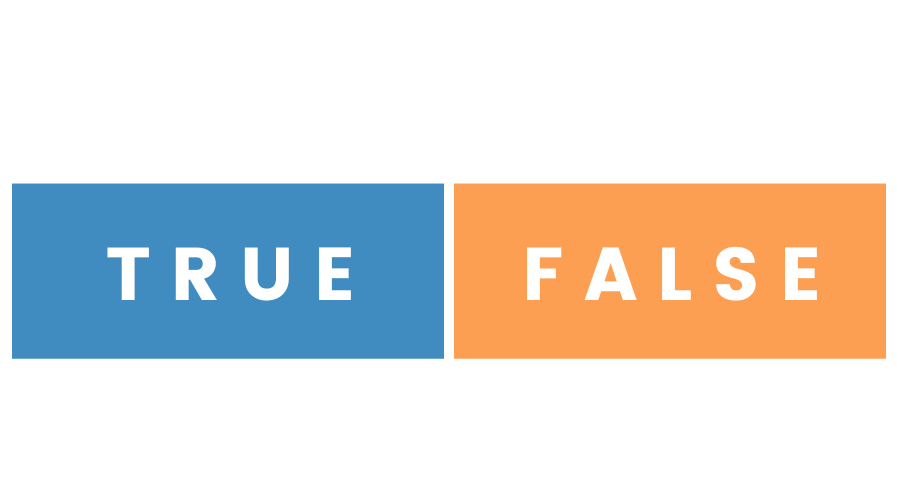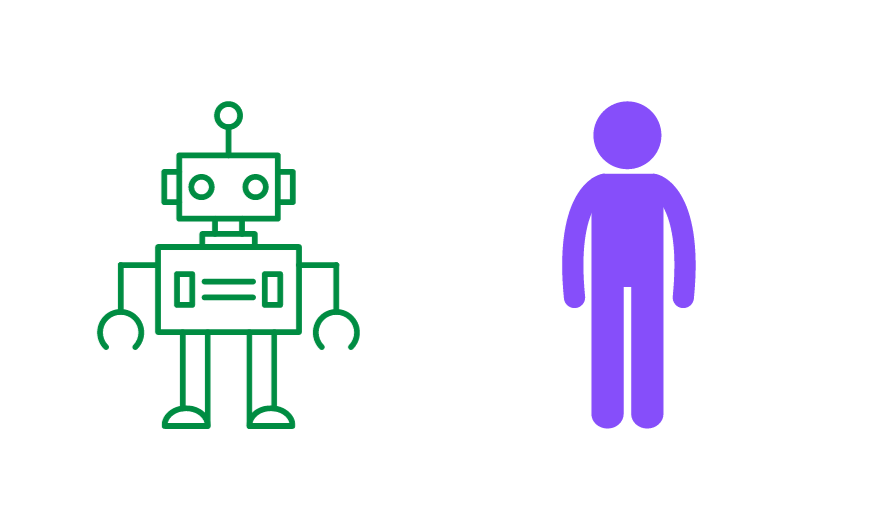Not a day goes by without a headline in praise or in fear of automation. It’s understandable. The progression of technology can be both exciting and terrifying. But it’s too often overlooked that AI is your friend, not your foe.
With industry analysts estimating that half of work is automatable, it might feel like it’s time to go full bore and turn every task over to business process automation. After all, BPA can boost efficiency by 20–35% and save companies over 25,000 hours of avoidable rework annually. But before you take the dive, you’ve got to look beyond the hype.
First of all, what is business process automation?
Let’s start simple and leave all the complicated terminology at the door. Business process automation (BPA) executes a sequence of tasks automatically. Organizations use automated technology to turn manual, mundane, and error-prone work into self-driving tasks that run themselves.
What types of processes do businesses automate? Processes as sophisticated as purchase orders, college admissions, and bank account opening. Within each process is a series of smaller tasks running autonomously, like data entry, approval routing, signature captures, and database management.
By turning manual tasks into automated process workflows, organizations can:
-
Save time
-
Reduce costs
-
Improve customer satisfaction
-
Eliminate errors
-
Improve transparency and security
-
Establish consistency
Let’s dive into two myths and three facts that will help you build a winning business process automation strategy.

❌ Fiction: All processes are suitable for automation
With all the buzz around hyperautomation, you might think it’s the salve to every business pain point. But it’s quite the opposite: automating the wrong things creates even more problems.
What might not benefit from automation?
-
White-glove service: Whether it’s your biggest client or an exclusive offering, some high-value interactions yield better results using the human touch.
-
One-off or very occasional processes
-
Processes that require significant contemplation: For example, a business that hypes an elite membership program might put a lot of thought into evaluating applicants. Avoid automating tasks with tons of non-repeatable, extenuating factors driving each individual decision.
-
Your competitive differentiator: AI and advanced automation used to be tools only the biggest brands could afford. Now, everyone can grab a slice of the automation pie. Avoid automating what makes your organization most valuable. Instead, focus on automating the processes undergirding your success so you can focus on delivering an unforgettable experience.
The best candidates for automation are processes that:
-
Are highly manual and repetitive
-
Occur frequently throughout the day
-
Are heavy on data entry
-
Use a repeatedly strict set of rules
-
Drain so much time that you’re ignoring your core competency
-
Involve coordination between multiple systems and departments
-
Carry significant regulatory implications
By selecting the right processes for automation, your organization is better positioned to win with automation.
❌ Fiction: Automation is a single technology
According to McKinsey, 66% of organizations are automating at least one business function.
But that doesn’t mean every company taps the same tech stack.
Business process automation is a busy family of technologies, each with its own distinct skill set. Here are the top five intelligent automation technologies companies are using in 2023:
-
Robotic Process Automation (RPA): RPA enlists an armada of software bots to perform manual tasks at lightning speed. Manual “swivel-chair” data entry tasks are RPA’s area of expertise. It can transfer data between systems, monitor competitor websites for pricing fluctuations, or log in to an application and perform a series of tasks. You can easily train RPA on any process that comes with a repeatable recipe of clicks and keystrokes.
-
Intelligent Document Processing (IDP): IDP manages your information more intelligently. It’s an AI-powered tool that doesn’t just digitize a document but extracts and organizes its content. IDP can pull mailing addresses from thousands of handwritten applications and automatically add the data to a CRM database. It can route an invoice for approval based on the line items. IDP makes the content of your documents usable in your business processes.
-
Artificial Intelligence (AI): Artificial intelligence helps organizations comb through data at greater speeds than ever before—and learn from it as it goes. Whereas traditional automations would do as told, again and again, AI can identify areas for optimization. Its applications are endless: fleet managers can use it to better route deliveries, researchers are training it to spot concerns in medical images, and marketers segment audiences with precision. It also powers top strategic moves like digital twins and process mining.
-
Natural Language Processing and Generative AI: Natural Language Processing (NLP) technology serves as a translator between humans and machines. With NLP, computers can comprehend human language—and act on it. For example, NLP helps a chatbot understand “I need to reset my password” and doesn’t just reply but knows what to do behind the scenes to change your credentials.
-
Computer Vision: Computer Vision powers self-driving cars, virtual trainers like fitness mirrors, and your smartphone’s Face ID. The technology grants machines a set of eyes so they can detect objects and make crucial decisions based on what they see.
While RPA can drop sales numbers into a table, Generative AI can help brainstorm the written section of the report. The technology is a big talker, able to ingest information and turn it into draft emails, social media captions, or even a chatbot’s responses.
These are just a few of today’s businesses’ top AI and automation tools. See what else you can find under the hyperautomation umbrella.
✅ Fact: There’s no digital transformation without process automation
The phrase “digital transformation” has excited boardrooms since the early 2010s. Over the years, various trends have helmed the concept. And it shows no signs of slowing down: the IDC predicts 40% of total revenue will come exclusively from digital products and services in 2026.
Automation is the growth factor behind every business, from local hospitals to start-ups that want to manufacture pharmaceuticals in orbit. Even if you don’t view your organization as a tech company, experts urge you to view yourself as a data company. Why?
Retailers are ingesting home layouts from Roombas, and Wall Street keys on satellite imagery to predict the total haul of the holiday shopping season. A single smartphone collects data from an onboard army of sensors, from accelerometers and gyroscopes to GPS locators. Add in smartwatches, TVs, and even toasters, Huawei predicts each person on the planet will own at least five smart devices by 2025.
Wrangling this unprecedented amount of data is simply impossible without BPA. Automation puts all this new data to use.
You can trigger automations based on certain parameters, recommend products, generate reports, and identify anomalies—all in real time. While it used to take weeks to prepare a standard financial report, smart companies are using process automation to route, manage, and analyze massive datasets.
✅ Fact: Automation is most successful when humans are involved
With all this talk about software and machines, it seems like humans have no role, right?
Think again: the most successful automation strategies combine machine speed with human intelligence. It’s called “humans in the loop” automation (HITL), and 65% of organizations relishing automation’s success rely on it.
As a consumer, you’ve taken part in several HITL automations—even from your favorite tech companies. Netflix uses automation to generate a line-up of shows and movies tailored to your likes and preferences, Venn-diagrammed with those like you.
But they still ask you, the human, to give their picks a thumbs up or down.
Your reactions feed into their algorithm to fine-tune future recommendations.
It’s the same on the business side. Effective automation doesn’t relinquish full control over to machines.

Anthropologists say the human brain’s been at it for anywhere between 35,000 and 1.7 million years. In that time, we’ve become experts in intuition: we just know when things aren’t quite right. Whether you’re using automation to serve wardrobe recommendations or comb data for compliance faults, humans have an eye for things artificial intelligence has yet to approach.
Another area where humans shine? Customer interactions.
Automation can handle invoice processing, application judgments, and order fulfillment. Everything that buttresses the behind-the-scenes action so you can focus on your biggest asset: your customer base.
In most instances, the human touch is the magic touch that can beat objections and push an on-the-fence customer into your club of loyalists. As more and more companies test out chatbots and virtual agents, talking to an actual human might become a competitive differentiator.
✅ Fact: Automation success doesn’t look the same for every business
Every company’s barometer for BPA success looks different. What KPIs are most popular to pursue?
-
Cost reduction
-
Improve a customer service metric like Average Handling Time or Net Promoter Score
-
Generate more inbound leads
-
Reduced error rate
-
Time saved
-
Slash customer churn
-
Process more applications
No matter which KPI is most important to your team, make sure you define very specific ways to measure success. For example, in and of itself, “generate more leads” is not a winning KPI. Pin a number on it: We want to generate 700 more leads over a 60-day period. The only way to find value in automation is to determine precisely how valuable the initiative is to your company.
How does BPA boost Hyper-Productivity?
Business process automation (BPA) can be a game-changer for your organization in more ways than one. One of the most significant ways you can transform your workflow is by boosting Hyper-Productivity. Instead of simply being productive, your team can become Hyper-Productive, completing work faster and more efficiently than ever.
Business process automation is an exciting next step for any organization to dive into. But, like any new initiative, you might have questions on how to get it right for your team. Chat with us to learn the best automation software for your organization.






